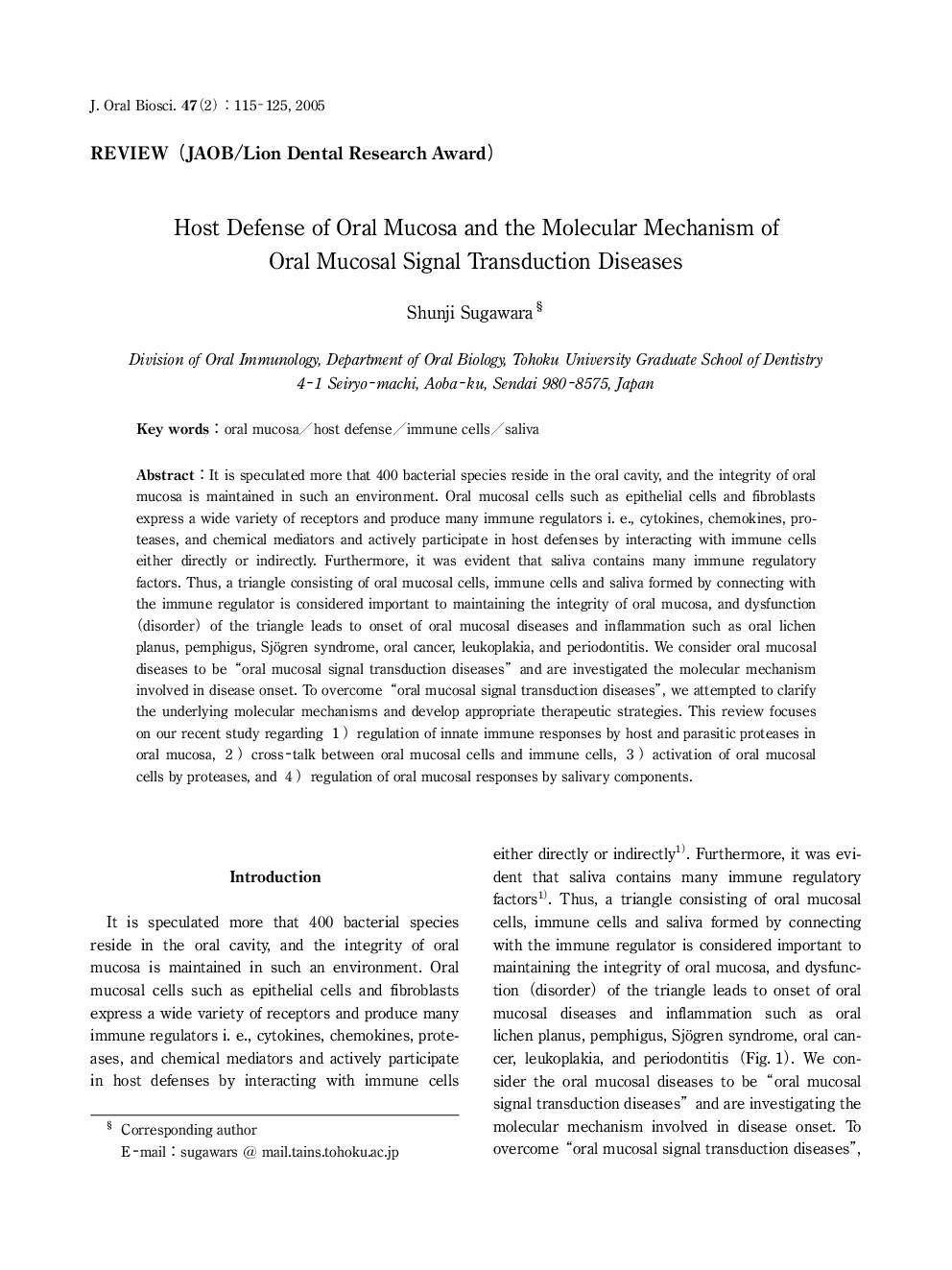| Article ID | Journal | Published Year | Pages | File Type |
|---|---|---|---|---|
| 9103368 | Journal of Oral Biosciences | 2005 | 11 Pages |
Abstract
It is speculated more that 400 bacterial species reside in the oral cavity, and the integrity of oral mucosa is maintained in such an environment. Oral mucosal cells such as epithelial cells and fibroblasts express a wide variety of receptors and produce many immune regulators i. e., cytokines, chemokines, proteases, and chemical mediators and actively participate in host defenses by interacting with immune cells either directly or indirectly. Furthermore, it was evident that saliva contains many immune regulatory factors. Thus, a triangle consisting of oral mucosal cells, immune cells and saliva formed by connecting with the immune regulator is considered important to maintaining the integrity of oral mucosa, and dysfunction (disorder) of the triangle leads to onset of oral mucosal diseases and inflammation such as oral lichen planus, pemphigus, Sjögren syndrome, oral cancer, leukoplakia, and periodontitis. We consider oral mucosal diseases to be “oral mucosal signal transduction diseases” and are investigated the molecular mechanism involved in disease onset. To overcome “oral mucosal signal transduction diseases”, we attempted to clarify the underlying molecular mechanisms and develop appropriate therapeutic strategies. This review focuses on our recent study regarding 1 ) regulation of innate immune responses by host and parasitic proteases in oral mucosa, 2 ) cross-talk between oral mucosal cells and immune cells, 3 ) activation of oral mucosal cells by proteases, and 4 ) regulation of oral mucosal responses by salivary components.
Related Topics
Life Sciences
Biochemistry, Genetics and Molecular Biology
Clinical Biochemistry
Authors
Shunji Sugawara,
